History of Calgary: Learn About the Founding of Calgary and its Timeline
Posted by Justin Havre on Monday, April 26th, 2021 at 7:05am.
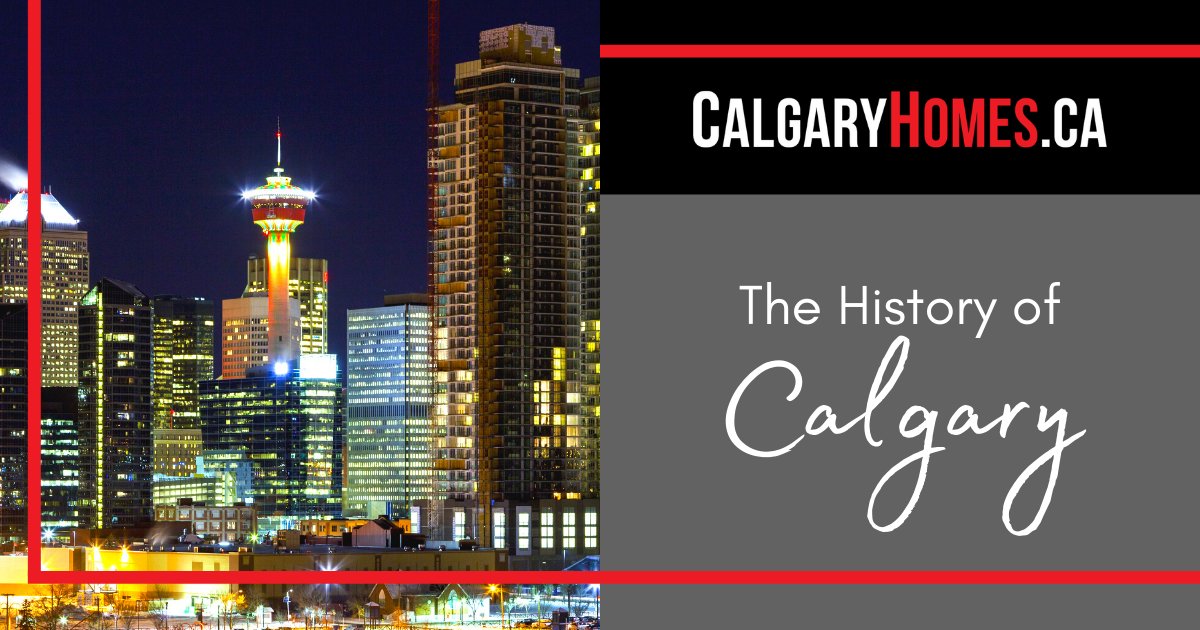
 Archeologists have found evidence of human habitation in and around what is now Calgary dating back 12,000 years. The abundant game and fishing drew nomadic groups and settlers, and over the next 10,000 years, the Calgary area was home to at least three dominant cultures. Around 2,000 years ago, the Blackfoot people arrived from the Eastern Woodlands area. Later, the Sarcee came to the area from the north around the early 1700s. After that, the Stoney people came to the area from Manitoba.
Archeologists have found evidence of human habitation in and around what is now Calgary dating back 12,000 years. The abundant game and fishing drew nomadic groups and settlers, and over the next 10,000 years, the Calgary area was home to at least three dominant cultures. Around 2,000 years ago, the Blackfoot people arrived from the Eastern Woodlands area. Later, the Sarcee came to the area from the north around the early 1700s. After that, the Stoney people came to the area from Manitoba.
The earliest evidence includes spear points found in plowed fields outside the city on its eastern edge. Campsites and bison kill contribute to the knowledge we have of the peoples who first lived in and travelled through this area. Fireplaces, tipi rings, and storage pits have been found that date back at least 4,000 years, and there are also sites nearby that include religious materials such as cairns, effigies, and medicine wheels. Hikers can view pictographs left behind on the Big Rock near Okotoks. Read on to learn more about Calgary's history.
Fort Calgary and European Settlement
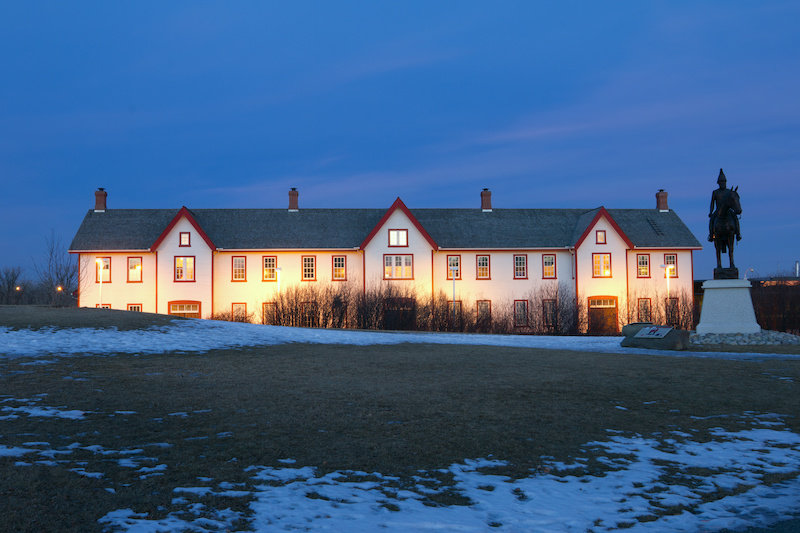 Cartographer David Thompson spent the winter in the company of a band of Peigan travellers in an encampment along the Bow River in 1787. He was the first documented European to visit the area. In 1873, John Glenn became the first European settler in the area. Others soon followed, with new settlers building a log cabin on the banks of the Elbow River in 1875.
Cartographer David Thompson spent the winter in the company of a band of Peigan travellers in an encampment along the Bow River in 1787. He was the first documented European to visit the area. In 1873, John Glenn became the first European settler in the area. Others soon followed, with new settlers building a log cabin on the banks of the Elbow River in 1875.
In the fall of that same year, the North-West Mounted Police (which later became the Royal Canadian Mounted Police) established a post in what would later become Calgary. The detachment was sent to protect the local fur trade and Canada's western plains against whisky traders.
The I.G. Baker Company from Fort Benton, Montana, constructed the original fort and log store. The fort remained nameless throughout construction, but locals referred to it as "The Mouth." NWMP Inspector Ephrem-A. Brisebois attempted to name the fort after himself. However, his superiors rescinded the order and suggested Fort Calgary instead, which became the fort's official name in 1876.
In 1881, the federal government began offering cattle ranching leases in Alberta. Ranchers could lease up to 100,000 acres for one cent per acre per year. The I.G. Baker Company drove their first herd of cattle there later that year.
Building the Canadian Pacific Railway
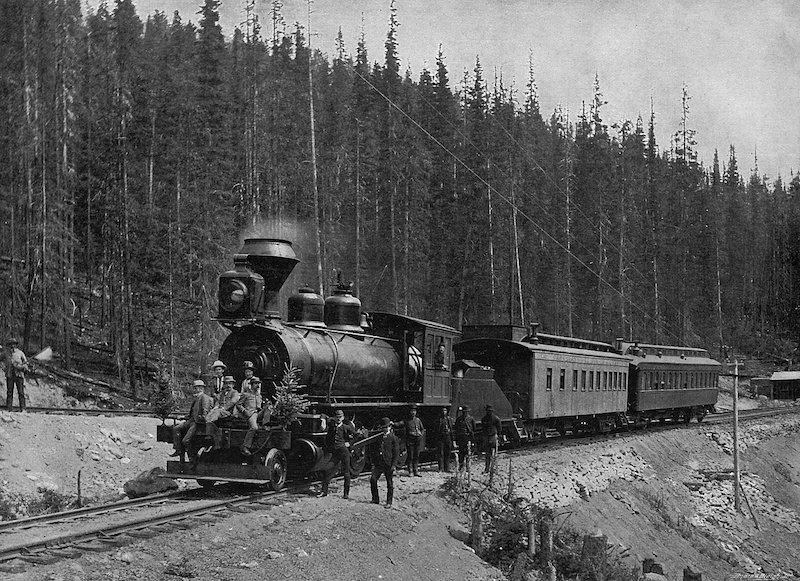 With the new cattle leases driving immigration into the region, it was the perfect time for the Canadian Pacific Railway (CPR) to expand through the area. Originally, the railroad would not pass near Calgary; instead, people concerned with Canada's defence favoured a route that took the railroad near Edmonton and through the Yellowhead Pass. However, CPR changed their plans in 1881, favouring a route that passed directly through the prairies by way of Kicking Horse Pass.
With the new cattle leases driving immigration into the region, it was the perfect time for the Canadian Pacific Railway (CPR) to expand through the area. Originally, the railroad would not pass near Calgary; instead, people concerned with Canada's defence favoured a route that took the railroad near Edmonton and through the Yellowhead Pass. However, CPR changed their plans in 1881, favouring a route that passed directly through the prairies by way of Kicking Horse Pass.
The railway reached the region in August 1883. A rail station was constructed on a site across the Elbow River from the previous townsite and influenced how the town continued to develop. The relocation of the old townsite's core came to a head when the local post office was anonymously moved across the river in the middle of the night, and soon, CPR began selling lots surrounding the station. Corner lots could be had for $450; the rest sold for $350 apiece.
The railroad was Canada's first transcontinental railway. While it was used primarily for freight, it was also the only practical means of long-distance passenger travel in most regions of Canada.
The railroad contributed to growth in the area, and by 1884, residents of the settlement felt they were ready for a local government of their own. A civic committee was soon formed to watch over the area's interests, and Calgary was soon incorporated as a town. A public school and a bridge across the Elbow River for easier travel soon followed.
The First Calgary Stampede
 In 1884, the Calgary and District Agricultural Society was formed to promote the new town and encourage ranchers and farmers to move west. Two years later, the society held its first fair, which attracted 500 visitors, a full quarter of the town's 2,000 residents. The fair continued to grow each year, and by 1889, the society had acquired land to host exhibitions. Crop failures and poor weather led to an interruption in the annual fair schedule that lasted from 1895 to 1899. The newly formed Western Pacific Exhibition Company took over that year and began hosting agricultural and industrial fairs.
In 1884, the Calgary and District Agricultural Society was formed to promote the new town and encourage ranchers and farmers to move west. Two years later, the society held its first fair, which attracted 500 visitors, a full quarter of the town's 2,000 residents. The fair continued to grow each year, and by 1889, the society had acquired land to host exhibitions. Crop failures and poor weather led to an interruption in the annual fair schedule that lasted from 1895 to 1899. The newly formed Western Pacific Exhibition Company took over that year and began hosting agricultural and industrial fairs.
In 1912, trick roper Guy Weadick began working with other locals and business people to create a show representing the wild west more accurately. The city built a rodeo arena, where 100,000 people attended the first Calgary Stampede. After unsuccessful attempts to host the Stampede in other cities, it returned to Calgary and became an annual event by 1923.
Over the years, the Calgary Stampede has grown to become one of the world's largest rodeos. It was inducted into the ProRodeo Hall of Fame in 2008.
Oil and Gas in Calgary
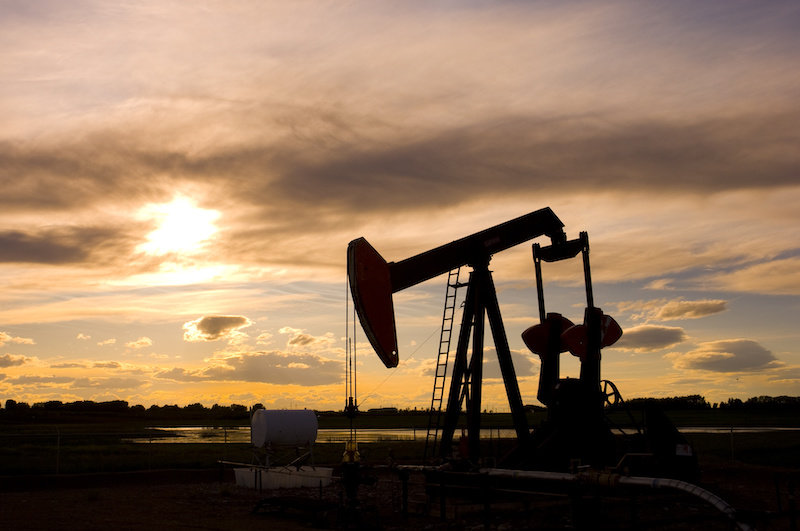 Agriculture and railway activities dominated Calgary's early economic growth, but that all changed when the Turner Valley Discovery Well struck oil on May 14, 1914. The 19-million-cubic-metre oil field, located southwest of Calgary, was heralded as the biggest oil field in the British Empire. In the first three weeks after the discovery, 500 oil companies were formed.
Agriculture and railway activities dominated Calgary's early economic growth, but that all changed when the Turner Valley Discovery Well struck oil on May 14, 1914. The 19-million-cubic-metre oil field, located southwest of Calgary, was heralded as the biggest oil field in the British Empire. In the first three weeks after the discovery, 500 oil companies were formed.
The quickly forming companies drew investment from many Calgary residents. Many lost their life savings during the area's first short-lived oil boom.
The outbreak of World War I ended the initial oil boom as resources and men went to Europe. The war drove higher prices for cattle and wheat, making them a surer investment than oil.
The oil fields in Turner Valley would boom again in 1924 and 1936. By World War II, the oil fields would produce more than 95 percent of the oil in Canada. Corporate offices from several oil companies stayed and expanded in Calgary. By 1967, Calgary had more millionaires than any other city in Canada and the world's highest per-capita rate of car ownership.
Calgary and the Olympics
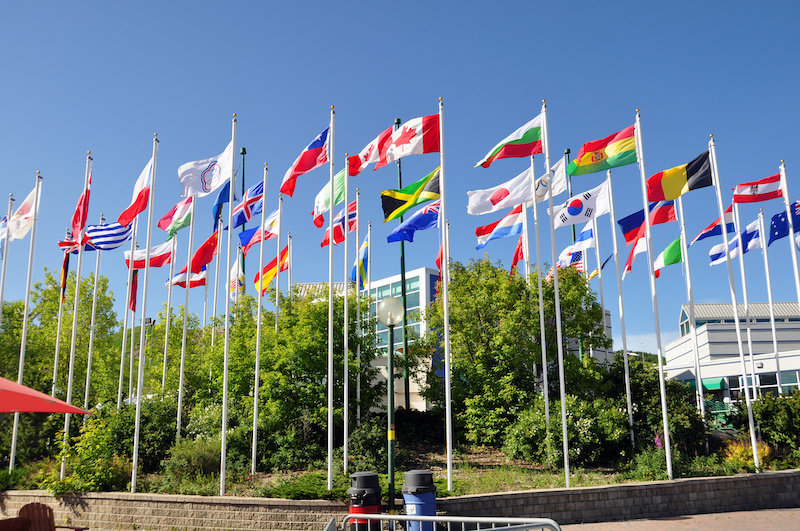 Civic leaders in Calgary began laying the groundwork for their bid to host the Winter Olympic Games in 1979. In 1981, Calgary became the first Canadian city selected to host the Winter Olympics when the International Olympic Committee voted to allow Calgary to host the 1988 Winter Games.
Civic leaders in Calgary began laying the groundwork for their bid to host the Winter Olympic Games in 1979. In 1981, Calgary became the first Canadian city selected to host the Winter Olympics when the International Olympic Committee voted to allow Calgary to host the 1988 Winter Games.
Five primary venues were built to host events. The Olympic Saddledome, located at Stampede Park, was created as a venue for figure skating and ice hockey. The Olympic Oval, the first fully enclosed 400-metre speed skating venue, was constructed at the University of Calgary. Seven world and three Olympic records were set in this venue, leading it to be dubbed the fastest ice on Earth.
Despite Canadian athletes failing to earn any gold medals in that year's Games, the events provided a major economic boom for the city.
Discover Calgary's Unique History
As in any city, Calgary's history is full of ups and downs, major economic booms, and recessions. Calgary has repeatedly reinvented itself and embraced changes and new opportunities. Oil and gas continue to comprise major parts of the local economy. However, the city has invested greatly in areas that include high-tech manufacturing and tourism. The Calgary Stampede and other events and attractions draw 3.1 million people to the city each year. Nearby mountains provide a scenic backdrop for the bustling city, whether residents live on Calgary's lakefront or in a city townhome. There is a great deal to discover here for newcomers and residents alike.
If you're looking for the perfect Calgary home, contact Justin Havre with eXp Realty and Calgary Homes at (403) 217-0003 to get in touch with a local Calgary real estate agent and discover your new dream home today.

